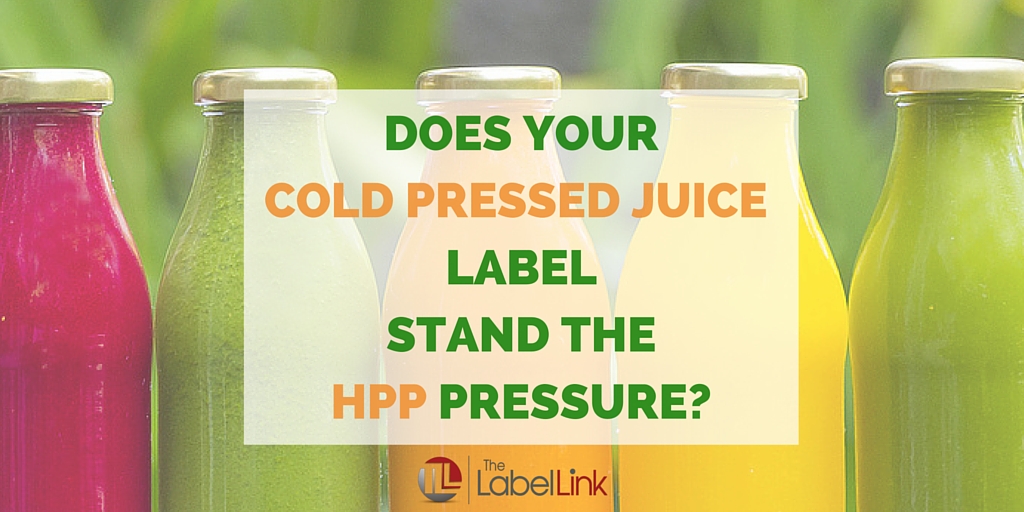
Following the Craze: What to Know About Labels for Cold Pressed Juice and HPP
Ah, there’s nothing like the taste of a refreshing cold pressed juice on a warm day. With each sip, you taste the sweet fruit and vegetable flavors. When you swallow, you know you’re nourishing your body with rich vitamins.
There’s a reason the cold pressed juice beverage has picked up so much steam over the past few years. Consumers love this drink and it’s flying off the shelves. If you’re a manufacturer, chances are you’re eager to get your product in front of these eager buyers. But before you do, there are a few things you must consider.
What is Cold Pressed Juice?
First, let’s take a closer look at the exact definition of cold pressed juice.
Cold pressed juice is the process by which the juices and pulp are extracted from the fruits and vegetables. Using a high-end hydraulic press and thousands of pounds of pressure, fruits and vegetables are juiced to extract the maximum liquid.
The “cold” part refers to the fact that zero heat or oxygen is used to extract this juice. This is important because it means there is no risk of lost nutrients during traditional pasteurization.
The challenge here is the shelf life. True cold pressed juice is only good for three to four days before it spoils, putting consumers (especially children and pregnant women) at risk. This means manufacturers must go to great lengths to preserve the delicious beverage.
The Importance of High Pressure Processing
High pressure processing (HPP) is used to extend the shelf life from 3-5 days to 30 – 45 days. It happens by submerging the bottled juices in cold water and high pressure. Still, no heat or oxygen is used, preserving the cold pressed juice advantages.
This last detail is important when it comes to bottling and labeling your juices.
HPP and Your Labels for Cold Pressed Juices
When your juices go through HPP, they must have the labels already on them. This can form a significant challenge for manufacturers because of the process the product packaging goes through during HPP.
During HPP, the labeled product is submerged in cold water where it remains under 60,000 – 87,000 psi for three to five minutes.
Because the HPP process is so intense, it requires a special kind of bottle that can withstand the high pressure. Your caps must also be able to stay on the bottle while the product is under pressure.
When the bottles leave the pressure chamber, they are soaking wet and must go through a drying cycle that does not use heat. Throughout the immersion in water, high pressure and drying cycle, the label must maintain its integrity. It has to stand out on the shelf and look appealing enough for consumers to pick up.
The Labeling Solution
There is a solution to this challenge. With the advent of squeezable bottles and products that go through processes, such as HPP, label manufacturers created new styles of adhesives for labels specifically designed to withstand the pressure (no pun intended).
Certain adhesives are designed to help the label keep its appearance during the pressure process. There are several types of adhesives used by label manufacturers for these types of products. The goal with each of them is to keep the label intact while also upholding the integrity of the design.
To know if your label can withstand the HPP process, it’s important to talk to your printer and put your new label through a few test runs.
Question: What has been your biggest labeling challenge when your cold pressed juices go through HPP?
Consumers have new demands today. They want the freshest products but they also understand the shelving limitations that go along with it.
